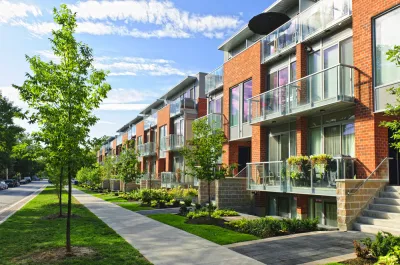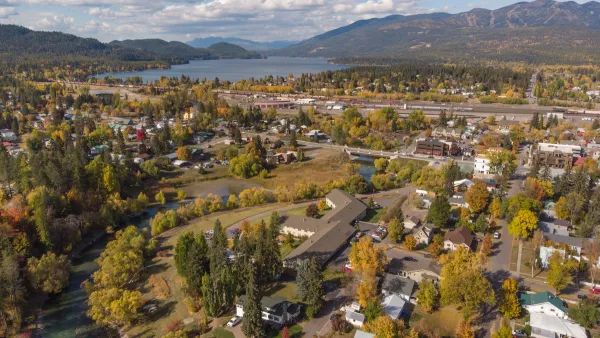Missing middle housing? Ending single-family zoning? How language impacts public opinion in the movement to increase housing density.

As cities and states around the country look to update their zoning codes to allow for more housing density, the language used around zoning reform can make a big difference in how initiatives are received.
As Teo Armus explains in the Washington Post, the framing of proposed zoning changes colors the way people view them, painting upzoning as either a threat to traditional neighborhoods or a boost to housing affordability.
Advocates say expanding housing supply would open expensive enclaves to more people, undoing policies once meant to keep out people of color. Opponents express concerns the changes would overwhelm local infrastructure and spoil what made these areas so attractive in the first place.
The phrase “ending single-family zoning,” which has been frequently used by media including Planetizen, “is an imprecise way of describing the change” because it “doesn’t tell you what it’s going to turn into,” says Jenny Schuetz, urban economist and senior fellow at the Brookings Institution. For people who fear the single-family home next door will be torn down in favor of a high-rise tower, language that more clearly explains the type of new housing that could be built—such as the increasingly popular ‘missing middle housing’—could assuage some of their fears.
According to Jason Jordan, public affairs director at the American Planning Association, “We have to be sensitive and try to find a vocabulary … that avoids the technical jargon debate or this very polarized culture-war debate over whether the suburbs are good or bad.”
FULL STORY: The battle over single-family zoning is also a fight over what to call it

Analysis: Cybertruck Fatality Rate Far Exceeds That of Ford Pinto
The Tesla Cybertruck was recalled seven times last year.

National Parks Layoffs Will Cause Communities to Lose Billions
Thousands of essential park workers were laid off this week, just before the busy spring break season.

Retro-silient?: America’s First “Eco-burb,” The Woodlands Turns 50
A master-planned community north of Houston offers lessons on green infrastructure and resilient design, but falls short of its founder’s lofty affordability and walkability goals.

Test News Post 1
This is a summary

Analysis: Cybertruck Fatality Rate Far Exceeds That of Ford Pinto
The Tesla Cybertruck was recalled seven times last year.

Test News Headline 46
Test for the image on the front page.
Urban Design for Planners 1: Software Tools
This six-course series explores essential urban design concepts using open source software and equips planners with the tools they need to participate fully in the urban design process.
Planning for Universal Design
Learn the tools for implementing Universal Design in planning regulations.
EMC Planning Group, Inc.
Planetizen
Planetizen
Mpact (formerly Rail~Volution)
Great Falls Development Authority, Inc.
HUDs Office of Policy Development and Research
NYU Wagner Graduate School of Public Service




























